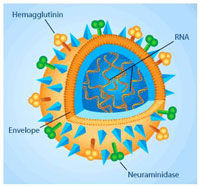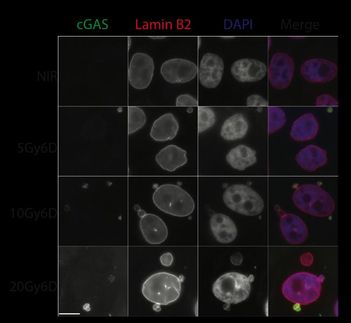Single host gene may hold key to treating both ebola and anthrax infections
Advertisement
Research published by Army scientists indicates that a minor reduction in levels of one particular gene, known as CD45, can provide protection against two divergent microbes: the virus that causes Ebola hemorrhagic fever and the bacterium that causes anthrax. Taken together, the results suggest a common host restriction factor and a promising approach to drug development for treating two completely different infections.
Scientists at the U.S. Army Medical Research Institute of Infectious Diseases (USAMRIID) reported that mice expressing reduced levels of CD45 (between 11 and 77 percent) were protected against Ebola virus. In addition to an overall survival rate of 90 to 100 percent, these mice had reduced levels of virus load in the major organs, and had completely cleared the virus 10 days after challenge. In contrast, mice that had naturally occurring levels of CD45—or none at all— failed to clear the virus and succumbed to infection within 7 to 8 days following challenge.
The protein encoded by CD45 is a member of the protein tyrosine phosphatase (PTP) family. PTPs are known to be signaling molecules that regulate a variety of cellular processes, including cell growth, cell division, and the development of malignancies that can lead to tumor formation.
Scientists created various "knockdown" mice, which expressed reduced levels of CD45, to determine how those changes may alter the body's immune response to microbial pathogens such as Ebola virus. According to the authors, the "knockdown" mice retained greater control of gene expression and immune cell proliferation following Ebola virus infection. These factors contributed to enhanced viral clearance, increased protection against the virus, and a reduction in cell death. The team's results suggest that host susceptibility to Ebola virus is dependent on the delicate balance of the body's natural immune system, which can be determined by the levels of a single regulator gene.
The recently published work builds upon a related study that appeared in the Journal of Biological Chemistry. That research showed that CD45 also plays a role in protection from Bacillus anthracis, the causative agent of anthrax. Specifically, the USAMRIID team demonstrated that in mice expressing 62 percent of the CD45 gene, about 70 percent were protected following exposure to anthrax.
"This report demonstrates the critical connection between basic research and the potential development of medical products," said COL John P. Skvorak, commander of USAMRIID. "Understanding pathogenesis of disease and host response is critical to the Department of Defense's investment in broad spectrum countermeasures."
The next step for investigators is to look at the mechanism of action to better understand how reduced expression of this gene regulates the pathogenesis of both diseases. That information could one day lead to the identification and discovery of additional promising compounds for treating Ebola and anthrax infections.
Original publications: Rekha G. Panchal, Steven B. Bradfute, Brian D. Peyser, Kelly L. Warfield, Gordon Ruthel, Douglas Lane, Tara A. Kenny, Arthur O. Anderson, William C. Raschke and Sina Bavari; "Reduced Levels of Protein Tyrosine Phosphatase CD45 Protect Mice from the Lethal Effects of Ebola Virus Infection."; Cell Host and Microbe 2009.
Rekha G. Panchal, Ricky L. Ulrich, Steven B. Bradfute, Douglas Lane, Gordon Ruthel, Tara A. Kenny, Patrick L. Iversen, Arthur O. Anderson, Rick Gussio, William C. Raschke, and Sina Bavari; "Reduced Expression of CD45 Protein-tyrosine Phosphatase Provides Protection against Anthrax Pathogenesis."; Journal of Biological Chemistry 2009.

























































